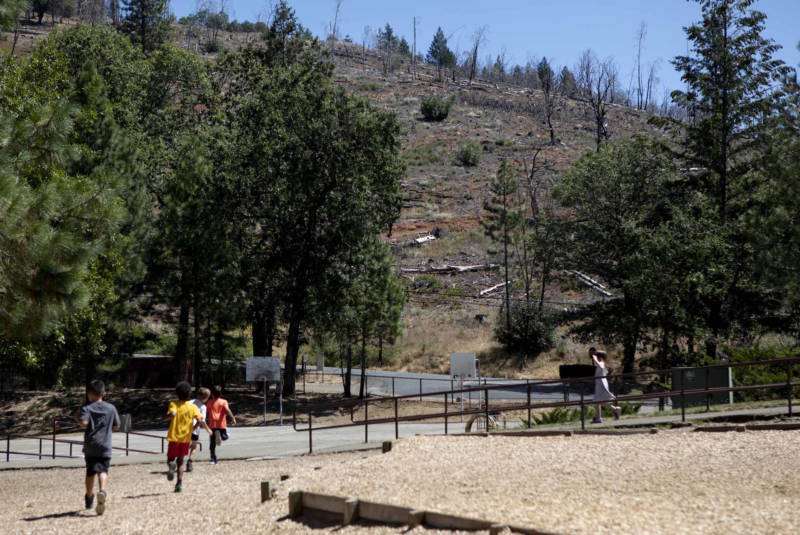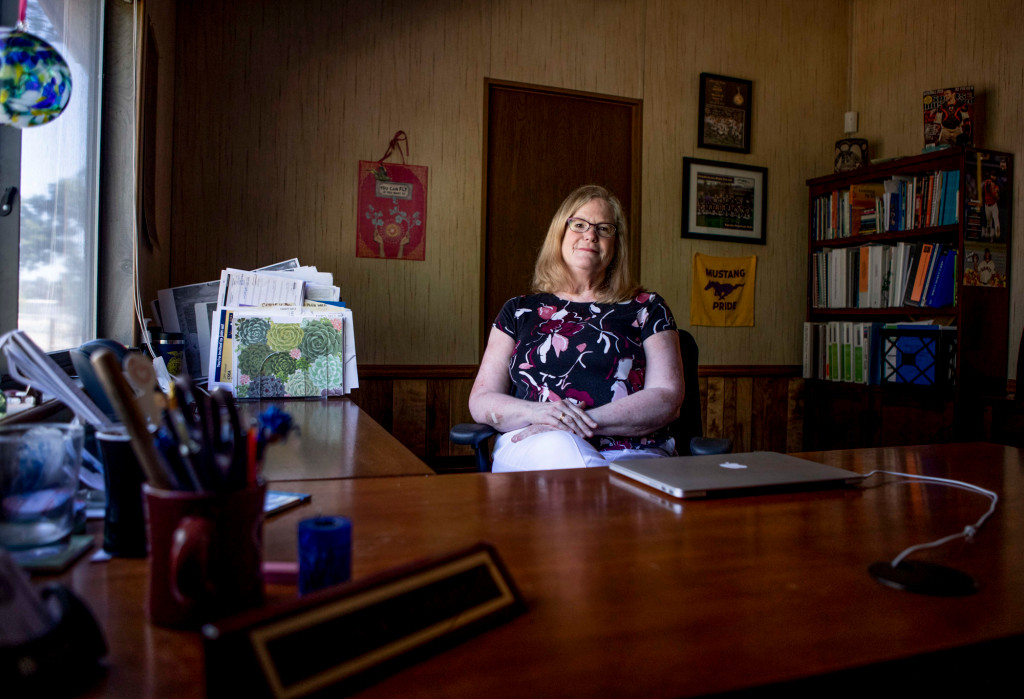The start of the school year had already been delayed by the Jerusalem Fire, which had forced schools in Middletown Unified, about two and a half hours southwest of Paradise, to cancel the first week of classes. Now the Valley Fire had made that blaze look minor.
Middletown Unified closed for another two weeks — 10 school days that state law does not require schools to make up. It was mid-October before the flames were fully contained.
Stone said she felt as if the earth beneath her schools had tilted on its axis. More than 200 students and district employees in the community of 1,300 had lost their homes, scattering to communities across Lake and Napa counties. The fire’s rapid spread caught many off-guard, and some students and families had driven through flames to evacuate.
All of the district’s school sites had extensive damage. So much smoke, soot and ash had infiltrated Cobb Mountain Elementary that it would be uninhabitable for much of the next year.
Thousands of dollars’ worth of food rotted in the district’s freezers, one of which broke down a year later because smoke crept inside its vents and festered. The fire took the fleet of maintenance vehicles and equipment. Days after schools reopened, sewage spilled out of several restrooms — the result of fire damage to the schools’ water and septic systems — and portable toilets had to be brought in.
“Instead of going along in our school year and thinking about reading scores and athletics and all the usual kinds of things that we deal with on a day-to-day basis, we were dealing with a very primal need for support because of the trauma,” Stone said. “And everyone was traumatized.”
Kaleigh Alves, a soccer forward who had watched from the field that day as the fire rose up over the ridge, recalled that the grieving began almost before her then-teenaged mind could grasp what had happened: “My teammates found out on the field after the whistle was blown that their house had burned down.”
Then she learned that her house, too, was gone. For two days, she said, her white-and-purple soccer uniform was her only clothing. She and her two sisters had to share a room at their grandmother’s house for the rest of the school year.
Overwhelmed school officials, she said, lacked the bandwidth to help much with college guidance, and cancelled senior year rituals that might have been normalizing out of fear of retriggering trauma.
Long after graduation, she said, anxiety lingered. When the Tubbs Fire swept Sonoma County two years later, she was a student at Santa Rosa Junior College and, again, evacuated. Feeling “super-paranoid,” she said, she frantically filled her car with belongings, fearing she might lose everything again.
‘A direct impact of climate change’
It’s not unusual for schools to close for wildfire in California, but never has the impact from fires been so sustained and intense as in the last several years.
In 2015-16 — the year of the Valley Fire — nearly 100 schools serving a combined 23,000-plus students closed due to wildfires, including a rural Fresno County charter school that lost 21 instructional days to the Rough Fire. The following fall, schools in Lake County closed again for a week during the Clayton Fire, which incinerated parts of Lower Lake about a half-hour north of Middletown.
In August 2016, more major fires — including Cedar in Tulare County, Blue Cut and Pilot in sprawling San Bernardino County and the Gap Fire in Klamath National Forest — kept more than 91,000 kids home from school, with some closures lasting 12 school days.
In 2017, school closures resulting from massive fires burning across the state, particularly in late fall, affected more than 865,000 students. That following March, closures due to flooding and mudslides resulting from the Thomas Fire in Ventura County affected 19,000 kids.
The number of students affected by emergency closures tallied more than 1 million in the year of the Camp Fire, as thick, hazardous smoke spread across Northern California counties and polluted dense urban areas with multiple large school systems. Fires in Shasta, Riverside and Lake counties prompted weeklong closures that affected some 80,000 kids in the first few weeks of the 2018-19 term.
In California, school districts that close for emergencies are able to request waivers from the state that essentially protect schools from taking a financial hit in their attendance-based funding for having to temporarily shutter. Schools are incentivized to report closures to the state, but not required.
And schools that receive state-approved attendance waivers are not required to make up those days of lost instruction. Nor are schools required to budget extra days in their academic calendars in case of emergencies. In an era of increasingly severe and lengthy closures, perhaps that should change, some educators say.
Though academic research — much of it focused on snow days — indicates that students can lose a day or two of instruction without much damage to test scores, studies show longer absences do make a difference, especially for disadvantaged students. In districts hardest hit by recent wildfires, CalMatters found, attendance often dropped precipitously even without an official school closure, or — if a school did close — morphed into high rates of chronic absenteeism after schools reopened.

